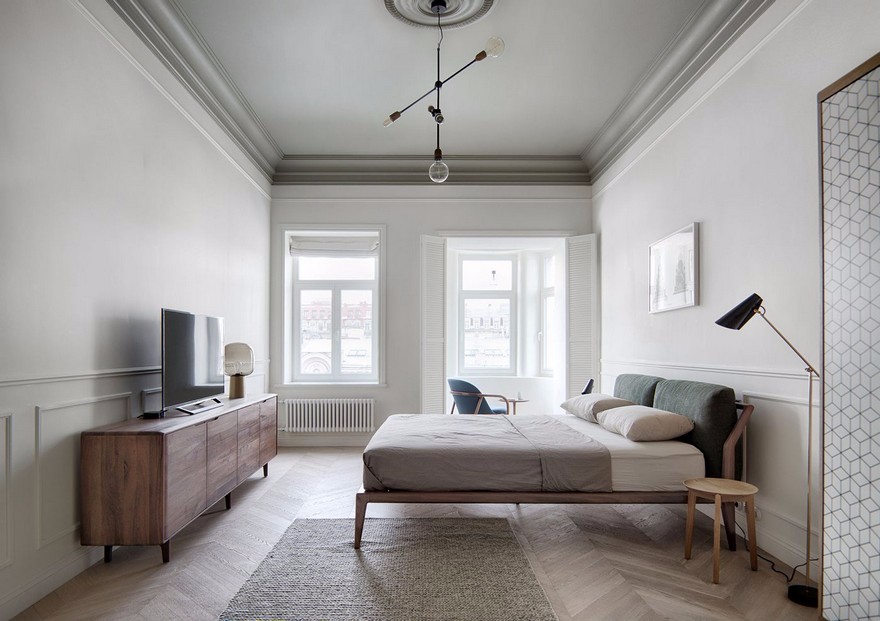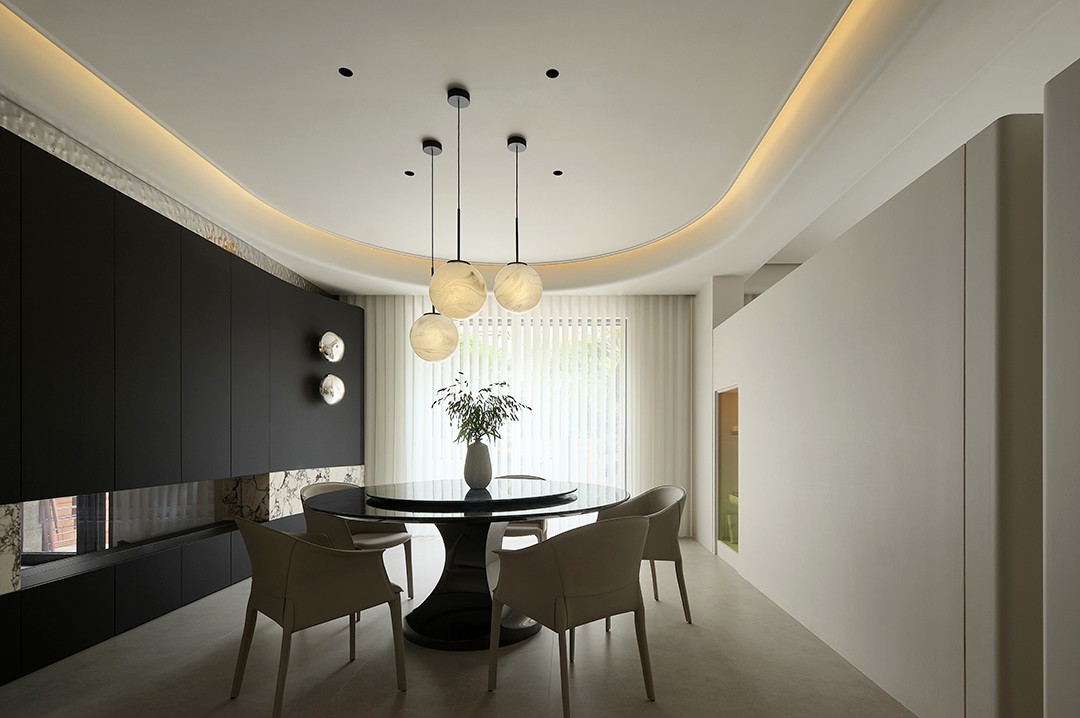Centre for Interactive Research on Sustainability Perkins + Will
2013-03-13 01:00
架构师提供的文本描述。由诺贝尔奖获得者(IPCC,2008年)约翰·鲁滨逊(John Robinson)构想,可持续性互动研究中心(CIRS)的设计是北美建成后最可持续的建筑。在过去的12年里,CIRS在不同的站点上进行了三次不同的迭代,它是一个强有力的愿景和架构师与客户的合作伙伴关系的证明,从项目一开始就支持该项目。
Text description provided by the architects. Conceived by Nobel laureate (IPCC, 2008) John Robinson, the Centre for Interactive Research on Sustainability (CIRS) was designed to be the most sustainable building in North America upon completion. Developed in three different iterations at different sites over twelve years, CIRS is a testament to a strong vision and the architect-client partnership that championed the project since its inception.
CIRS位于温哥华不列颠哥伦比亚省大学(UBC)的一个密集地点,有来自私营、公共和非政府组织部门的研究人员,他们共同努力推进可持续技术和建筑实践方面的创新,并为这些技术的广泛实施创造一个跳板。这座五千六百七十五平方米的“活生生的实验室”被组织成两个四层楼高的机翼,中间有一个作为建筑大厅的中庭,有450个座位的礼堂,还有一个“社交冷凝器”空间。除了学术办公室、会议室和社交空间外,CIRS还包括室内环境质量和建筑模拟软件实验室;具有先进的互动技术以使观众参与可持续性和气候变化情景的集团决策剧院;共享实时建筑性能的建筑物管理系统;不使用一次性包装并提供本地有机食品的咖啡馆。此外,研究人员研究用户与该设施的互动,以提高建筑性能,最大限度地提高居民的健康和福祉。
Located on a dense site at the University of British Columbia (UBC) in Vancouver, CIRS houses researchers from private, public, and non-government organization sectors, who work together to advance innovation in sustainable technology and building practices, and to create a springboard for their widespread implementation. The 5,675 sm ‘living lab’ is organized into two four-storey wings, linked by an atrium that serves as a building lobby, entry to a daylit 450-seat auditorium, and ‘social condenser’ space. In addition to academic offices, meeting rooms, and social spaces, CIRS includes indoor environmental quality and building simulation software labs; a Group Decision Theatre that has advanced interaction technologies to engage audiences in sustainability and climate change scenarios; a building management system that shares building performance in real-time; and a café that uses no disposable packaging and serves local, organic food. Furthermore, researchers study user interactions with the facility to improve building performance and maximize inhabitant health and well-being.
CIRS最大限度地利用被动环境战略和减少需求,并展示可持续的系统。原有的“欲望线”被保留下来,作为一种城市战略来强调再生水系统,并让行人参与该项目的可持续发展目标。建筑物的聚集有助于实现所有居民100%的自然日光和通风的目标;礼堂屋顶上的活屋顶为办公用户提供一个庭院设施;建筑物集成的光能遮阳可操作窗口;以及表达的木材结构是由FSC认证的和松甲虫杀死的木材建造的。西面的活生生的太阳能屏幕上种着落叶藤蔓-一旦长在里面,它就会成为一种动态遮阳装置,对季节变化作出反应。除了辅助自然通风之外,公众可以进入的中庭是一个教育空间,所有这些策略都是可见的。
CIRS maximizes passive environmental strategies and demand reduction, and puts sustainable systems on display. A pre-existing ‘desire line’ that cuts through the site was retained, used as an urban strategy to highlight the reclaimed water system and engage pedestrians with the project’s sustainability goals. The building massing contributes to the goal of 100% natural daylight and ventilation for all inhabitants; a living roof on the auditorium roof provides a courtyard amenity for office users; building-integrated photovoltaics shade operable windows; and the expressed wood structure is constructed of FSC-certified and pine-beetle-killed wood. The western façade’s living solar screen is planted with deciduous vines—once grown in, it will act as a dynamic shading device that responds to seasonal change. In addition to assisting natural ventilation, the publicly accessible atrium is an educational space where all of these strategies are visible.
超过LEED白金状态,CIRS被设计成七种不同的“净正”-能源;结构碳;操作碳;水;将被动的占用者变成活跃的居民;促进健康和生产力;以及促进幸福。这座“生活建筑”收集阳光,吸收附近建筑的余热,并与地面进行取暖和冷却,并将600兆瓦的剩余能源送回校园,同时每年清除170吨温室气体排放。CIRS设计用于满足设施100%的用水需求,收集雨水供饮用水使用,并在现场太阳能水生物过滤中净化废水。CIRS的木材结构储存904吨碳,与平均UBC建筑相比,碳足迹减少了近90%。
Exceeding LEED Platinum status, CIRS was designed to be ‘net positive’ in seven different ways—ways—energy; structural carbon; operational carbon; water; turning passive occupants into active inhabitants; promoting health and productivity; and promoting happiness. This ‘living building’ harvests sunlight, captures waste heat from a nearby building, and exchanges heating and cooling with the ground—and returns 600-megawatt-hours of surplus energy back to campus while removing 170 tonnes of GHG emissions annually. Designed to supply 100% of the facility’s water needs, CIRS collects rainwater for potable use and purifies wastewater in an on-site solar aquatics biofiltration. CIRS’s wood structure stores 904 tonnes of carbon, reducing the carbon footprint compared to the average UBC building by almost 90%.
不仅仅是一座建筑,CIRS是一个研究工具,它展示了可持续设计和建筑的可能性,作为变革的催化剂。一份技术手册和网站(www.Cirs.ubc.ca)进一步传播有关该项目的经验教训、正在进行的更新和实际执行情况数据的信息。创建CIRS的过程重塑了UBC的校园愿景和作为一个机构的角色;CIRS的结果正在帮助世界走向一个更可持续的未来。
More than a building, CIRS is a research tool that demonstrates the possibilities in sustainable design and construction, serving as a catalyst for change. A Technical Manual and website (www.cirs.ubc.ca) further disseminate information with lesson learned, on-going updates, and actual performance data from the project. The process of creating CIRS has reshaped UBC’s vision for its campus and its role as an institution; the results from CIRS are helping move the world toward a more sustainable future.
 举报
举报
别默默的看了,快登录帮我评论一下吧!:)
注册
登录
更多评论
相关文章
-

描边风设计中,最容易犯的8种问题分析
2018年走过了四分之一,LOGO设计趋势也清晰了LOGO设计
-

描边风设计中,最容易犯的8种问题分析
2018年走过了四分之一,LOGO设计趋势也清晰了LOGO设计
-

描边风设计中,最容易犯的8种问题分析
2018年走过了四分之一,LOGO设计趋势也清晰了LOGO设计






































































